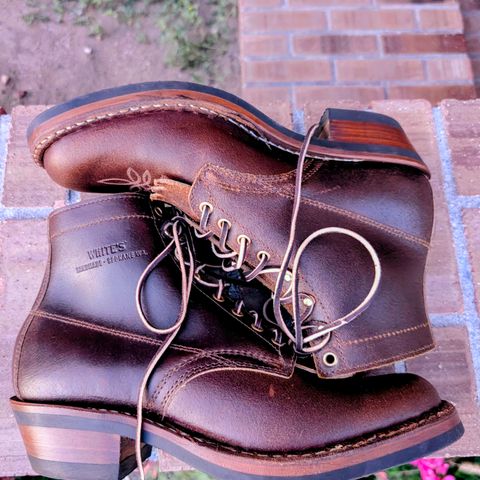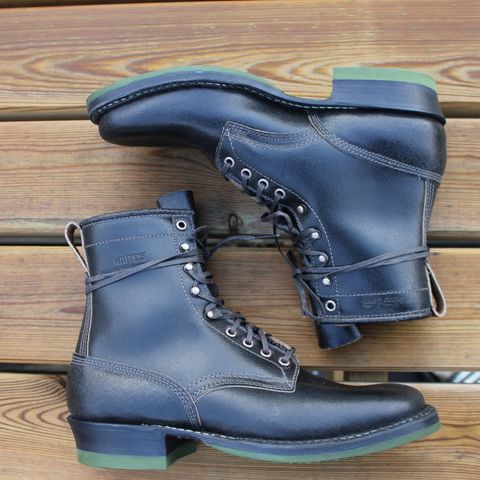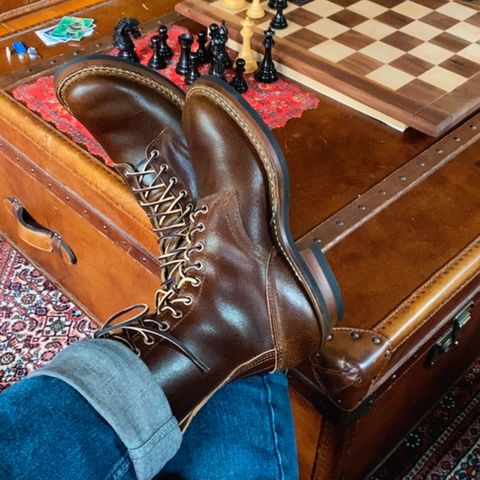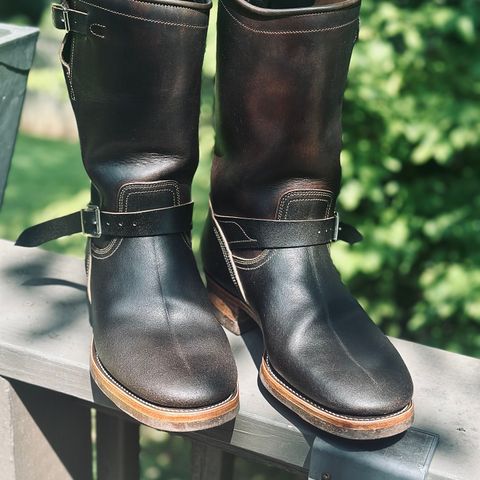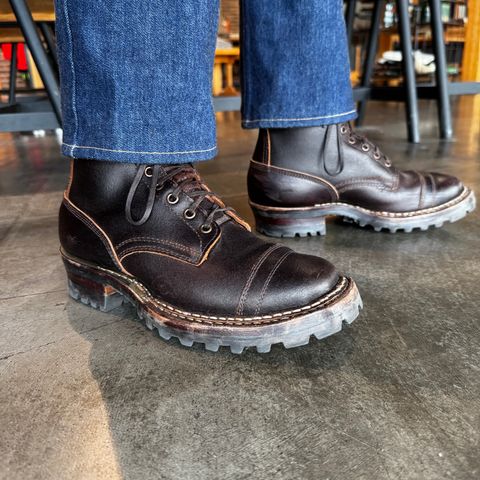About
Horween Waxed Flesh is a specialty leather produced by Horween Leather Company of Chicago, Illinois. Also known as Huntsman or French Waxed Calf, this leather represents Horween's version of traditional French waxed leather techniques applied to their Chromexcel tanning process. The leather is characterized by its flesh side (suede side) being treated with wax and finishing compounds while leaving the grain side untreated, creating a distinctive textured surface with characteristic aging properties.
About
Horween Waxed Flesh is a specialty leather produced by Horween Leather Company of Chicago, Illinois. Also known as Huntsman or French Waxed Calf, this leather represents Horween's version of traditional French waxed leather techniques applied to their Chromexcel tanning process. The leather is characterized by its flesh side (suede side) being treated with wax and finishing compounds while leaving the grain side untreated, creating a distinctive textured surface with characteristic aging properties.
Waxed Flesh follows the same fundamental Chromexcel production process but reverses the typical finishing approach by applying all treatments to the flesh side rather than the grain side. This technique produces a leather with enhanced water resistance and distinctive patina development characteristics that have made it popular for heritage footwear and military reproduction boots.
Manufacturing process
The production of Waxed Flesh begins with Horween Leather Company's standard Chromexcel base process, which involves full vegetable re-tanning and hot stuffing. The key difference lies in the finishing approach: while traditional Chromexcel receives finishing treatments on the grain side, Waxed Flesh is finished exclusively on the flesh side.
The flesh side undergoes Horween's proprietary hand-dyeing procedure, followed by hand glazing to achieve a tight flesh surface and final luster. This process colors, waxes, seals, and flattens the natural nap of the flesh side. The wax application is particularly important, as it creates the leather's characteristic smooth yet textured feel and provides the enhanced water resistance that defines the material.
Historical background
Waxed flesh leather has its origins in World War II when Horween Leather Company served as the official supplier of leather for the U.S. Marine Corps. During this period, the company produced boots using their Chromexcel leather for military use.
The connection to modern waxed flesh stems from field practices where marines and soldiers would treat their Chromexcel boots with dubbin—a mixture of natural waxes and oils—to enhance water resistance for field conditions. This practical treatment inspired the development of the factory-applied wax finishing process that characterizes contemporary Waxed Flesh leather.
The Natural Waxed Flesh formulation specifically references the N-1 military issue Boondocker, demonstrating how soldier field treatments for protection and utility influenced the commercial leather's development.
Characteristics and performance
Waxed Flesh exhibits a distinctive combination of smooth and rough textures when new, created by the heavy wax treatment applied to the flesh surface. This initial state produces a smooth, lustrous appearance that gradually reveals the underlying nap through use and wear.
The leather provides enhanced water resistance compared to untreated roughout leathers, ranking highest among roughout leather types in water resistance testing. The wax treatment makes the surface highly resilient to rain, scuffs, and environmental elements, making it suitable for work boot and outdoor applications.
The material maintains the structural characteristics of its Chromexcel base while offering the distinctive aesthetic and performance benefits of the waxed flesh finishing. This combination results in a leather that balances durability with distinctive visual appeal.
Aging and patina development
The aging process of Waxed Flesh is particularly distinctive due to its reverse construction and wax treatment. Through normal wear, friction from walking, and contact with objects, the surface wax gradually wears away to reveal the sand-colored nap of the underlying flesh side.
This wear pattern creates distinctive patina development where each scuff and scrape brings the leather's natural nap back to the surface. The result is a highly individualized aging pattern that reflects the wearer's specific usage patterns. Brown Waxed Flesh typically lightens from dark brown to medium brown tones, while black varieties reveal grey undertones as the wax layer diminishes.
The leather is often rated as having maximum patina potential, transitioning from its initial glossy waxed appearance to a matted, nappy roughout texture with extended wear. This dramatic transformation makes each piece distinctive based on its usage history.
Care and maintenance
Waxed Flesh requires minimal initial maintenance due to its protective wax treatment and underlying Chromexcel base. The leather typically does not need conditioning for extended periods after purchase, as the wax provides natural protection against drying and environmental damage.
Basic cleaning involves wiping with a damp cloth and brushing for dirt removal. For stubborn dirt or mud buildup, leather boot cleaner can be applied directly with gentle pressure using a horsehair brush. As the natural nap begins to show through wear, suede protector sprays or waterproof treatments can help maintain protection while preserving the developing patina.
When conditioning becomes necessary, lighter products like Bick 4 are preferred over heavy wax-based conditioners, as waxy balms can darken the emerging roughout and interfere with natural patina development. Some users choose to re-wax their leather periodically to maintain the original appearance, while others prefer to allow the natural aging process to continue.
Applications
Waxed Flesh is commonly used in high-quality footwear production, particularly for boots designed for outdoor and work applications. The leather is especially suitable for unlined construction, where the flesh side provides comfort against the foot while the protective wax coating offers durability.
The material has found particular favor in military reproduction boots and heritage workwear, where its historical connection to World War II military applications adds authenticity to period-correct designs. Modern boot manufacturers utilize Waxed Flesh for both work boots and fashion-forward heritage styles, taking advantage of its distinctive aesthetic and practical properties.
Due to its distinctive patina development characteristics, Waxed Flesh is often recommended for casual rather than formal applications, as its evolving appearance suits relaxed styling better than business or dress contexts.
References
"The Leather that has 3 Names". Horween Leather Co. December 9, 2009.
"Horween Waxed Flesh, Roughout, and Reverse Chamois Leather". Aun Tay. Retrieved September 5, 2025.
"Horween Leather Company: Waxed Flesh Leather". Billykirk. Retrieved September 5, 2025.
"Horween Waxed Flesh Chromexcel". The Tannery Row. Retrieved September 5, 2025.
"Leather Notes: Black Waxed Flesh". Truman Boot Co. Retrieved September 5, 2025.
